#Pathogens
Explore tagged Tumblr posts
Text
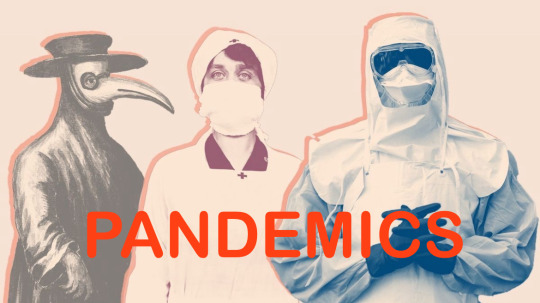
PANDEMICS- Hostile Power Takeover? Learnings on Urban & Domestic Warfare, “Disease: Bacteria Part 1, Fundamental Considerations”:
Let’s say the hostile power is more technologically advanced & half robot/half machine or full machine, so seemingly unkillable. Organic beings are very vulnerable to having disease used as a weapon against them.
Disease can be a major benefit to this type of hostile power & it would be an incredibly powerful weapon. This allows the destruction of an organic-based domestic population & it can also allow the harvesting of resources to build new bodies and/or reuse of the entire body depending on the disease process.
There are many insidious ways diseases develop & spread. This process DOES NOT just occur in a laboratory. Remember that there are many different “groupings” of entities we refer to as pathogens or things with the ability to cause disease.
Bacteria are an important one. Bacteria & other pathogens can reproduce by multiple means. Here I’m going to speak about bacteria with the capacity to do Bacterial conjugation. This involves passing characteristic between two different bacteria similar to how sexual reproduction can pass on characteristics. This is overall an important conversation because a lot of the most complex & common life forms in our daily lives also spread these characteristics through similar principles through sexual reproduction.
> A lot of bacteria to our awareness are able to pass on characteristics. Bacterial DNA contains the “instructions”/“resources” for bacteria to either have or not have characteristics.
-Bacterial conjugation for example allows one bacteria to attach to a second bacteria & send resources to the second bacteria. After this process, the second bacteria is able to transform and display the characteristics transferred to it. Example: Bacteria A can change colors like a chameleon. Bacteria B cannot change color. Once Bacteria A attaches to Bacteria B and they are compatible, Bacteria A passes on resources to Bacteria B. Bacteria B then acquires the ability to change color. Bacteria B now can change color & has attainted the same advantage as originally only bacteria A had. Now Bacteria A and Bacteria B can change color like a chameleon.
- The other way characteristics form & occur in a bacterial population is through mutation. If a bacteria’s DNA is altered or mutates then it can produce a bacteria with new traits & characteristics. Radiation for example, like from X-rays, often causes mutations. Sometimes mutations do “nothing” we can really perceive with our eyes. But overtime, they will eventually create large changes and can produce huge benefits for bacteria. For example: A bacteria could have always have been wiped out from nuclear weapons then overtime from mutations it can acquire the ability to survive living inside an area with nuclear radiation.
-This is a very important concept to fully understand so that you can become cognizant of how insidious this process is when discussing what bioterrorism in the modern world can look like. Pandemics are not caused just from mysterious lab leaks. The practices we do everyday are still contributing to the next pandemic occurring.
-This also gives everyone a better understanding of how MRSA or an antibiotic resistant bacteria really was “made” inside our hospitals.
> Bacteria can possibly have random or genetically engineered characteristics.
-If there are 100 random bacteria on an isolated surface that formed there naturally, some will have favorable characteristics to cause severe disease. But, some bacteria will not have those characteristics to cause severe disease. The bacteria lacking these deadly characteristics, but are still part of the same family of bacteria, would be considered weaker pathogens (weaker pathogen meaning they would cause less severe disease in organic beings).
-**But it is important to remember, If someone purposefully put bacteria down on a surface there is a chance it will not be a random distribution in strength of bacteria & they will mostly all be bacteria with strong characteristics. That group would probably be closer to 100 out of 100 of the bacteria carrying the deadly characteristic.**
>There are 2 main basic premises (which can be further subdivided and added onto when discussing what makes pathogens strong, but for now I’m discussing a more fundamentals explanation) we consider when determining bacterial pathogen strength: number of bacteria & the amount of deadly/harmful characteristics each bacteria possess.
-Reducing the overall number of bacteria in a group of random bacteria does not always mean you make a pathogen less strong. (Example: Purposefully killing 50 bacteria out of 100 and now there are only 50 bacteria in the group.)
If you destroy many of the weaker bacteria & only leave strong bacteria to reproduce, pathogens overtime can get stronger & more deadly. So, by destroying only the weaker bacteria in a group of bacteria, you slowly make pathogens stronger through this natural process & it doesn’t have to occur inside of a laboratory. To make a bacterial pathogen less strong by focusing on decreasing the overall number of those bacteria that exist in our world, you would also have to consider how many of each strength you eliminate. This is because we currently we do not use practices that wipe out groups of bacteria 100%, so we must consider these two elements together instead of separate when evaluating pathogen strength. Example: Lets say there are 100 bacteria and you wipe out 90. Bacteria A can cause humans to be paralyzed. Bacteria B cannot paralyze humans. Out of the 10 bacteria still alive, if all 10 are Bacteria A then you have eliminated the chance people would be infected with the less severe version of the disease, with Bacteria B. In the long term Bacteria A now has a strong chance to reproduce & when Bacteria A infects people it would then cause paralysis in everyone & the population could collapse. In another scenario, consider if you wiped out 90 bacteria out of 100, but you did it purposefully. Out of the 10 bacteria left, 9 were Bacteria that were Bacteria B & couldn’t cause paralysis. The last 1 out of the 10 left was Bacteria A. Then when those 10 bacteria reproduced it effectively helps “dilute” this negative characteristic in this bacterial family. Based off randomness & probability, when there this group reproduces to the size of 20 bacteria only approximately 2 of them may carry Bacteria A’s paralytic characteristic & 18 will carry bacteria B’s characteristic that does not cause paralysis. So, even though we can’t stop the bacteria number from growing, since we mindfully intervened we can still divert the trajectory of the pathogen from becoming a pathogen with the ability to become “pandemic level” and/or very very harmful.
>Two ways pathogens can get weaker is by lowering the amount of bacteria in the world & by lowering its severe disease characteristics, but this these two categories have an important interplay.
-This is an oversimplified explanation of how disease spreads & evolves, but the fundamental principles are VERY important to the overall understanding of what’s occurring. Imagine a group of bacteria you count has 100 total bacteria. 50 of them carry a gene to cause paralysis in humans & 50 do not carry this gene. When 100 people come in contact with the 50/50 bacteria distribution and get sick only 50 out of 100 of the people get paralyzed. This allows the other 50 people time to work on vaccinations & interventions to stop everyone from eventually being paralyzed.
-But, if you kill the 50 out of the 100 bacteria that do not carry the gene for paralysis then your bacteria group went from 100 to a total of 50 in size. In the short term the spread of the disease is likely to go down, as it is less likely people will randomly spread 50 objects instead of 100. BUT, those 50 bacteria with the gene to cause paralysis will only reproduce with other bacteria that also have that gene. So this bacteria, since you wiped out the 50 that don’t cause paralysis, now ALL cause paralysis & anyone who comes in contact with this bacteria strain will get paralyzed. So eventually with time the group of 50 bacteria will reproduce to 100 & spread at the same rate as they were originally, but now they cause more harm to people.
>When you unknowingly touch a colony of bacteria on an object or life form, you pick up a random sample of random “strength” of bacteria.
>****PLEASE READ: you can ALSO pickup a sample of bacteria that is all “strong bacteria” but this is NOT usually a natural occurrence you will see & is suggestive someone or something altered the bacteria and purposefully put those bacteria there. A group of bacteria that looks like it formed organically vs one that was purposefully placed there can be differentiated with taking samples of surfaces and people & counting how many strong bacteria vs weak bacteria there are, but we as a population do not regularly test for this in this way. Due to this I’m going to speak with the viewpoint of natural bacteria groups that have a gradient of “strengths”. In an ideal world we would identity groups of bacteria that have gradients of strength of bacteria vs groups of all similar strength, as interventions to stop them from becoming strong pathogens work DIFFERENTLY.)
>After you touch those bacteria they attempt to multiply and stay alive on you. Then if you touch other things they can be placed on another surface or thing. Sometimes they are placed on other surfaces in an environment or you touch your body & they are placed closer to an entrance to the inside or your body & then they are able to enter your body.
-This process will cause one of the following to occur: bacteria will stay in the area you touched & colonize it, they will die when attempting to enter the body, the bacteria will give you a disease , or in some cases the bacteria will live symbiotically inside you & help your body. If a bacteria lives symbiotically with you & does not cause harm then we do not refer to that as a pathogen, but rather just as a bacteria.
>Anytime you wipe out a group of bacteria by taking out 100% it causes that pathogen to get weaker overall, but the issue is that we do not do interventions that wipe out 100%.
-Currently anytime you clean an object in the hospital with a sanitizing wipe, you always kill less than 100% of the bacteria. This leaves behind a certain % of bacteria & they will be the strongest of that group of bacteria, because they were able to live even though you applied a cleaning product on them. This means the strongest bacteria left, even though there are less after cleaning, are now reproducing over and over again & getting stronger.
-So, when there is an environment with a large amount of bacteria variability (so all these new patients with new exposures to new bacteria that travel and touch things all the time), with shared equipment, with not 100% effective methods to destroy pathogens, & this long list of variables, we slowly produce very strong & deadly pathogens inside of hospitals.
-IF someone purposefully puts deadly bacteria ontop of a surface inside a hospital and it is a group of 100 strong & identical or cloned bacteria with no difference in genetics then wiping them out through imperfect cleaning will overall reduce pathogen deadliness. This is because there are no “stronger” pathogens vs “weaker” pathogens. They are all the same strength in this example and therefore will always get weaker when you reduce their number because they won’t reproduce to be more deadly.
>People often think when people are trying to cause them harm that would only occur when someone makes a pathogen in a lab & then deceptively goes and places some near you. This is not accurate.
-With knowing this do you see how for a hostile power there is actually LESS incentive to going through with all that work & instead a hostile power can abuse the system to cause harm? If you expect biological warfare to ONLY come out of a lab, this means you would be looking for the wrong patterns of behavior & pathogens will spiral out of control.
A lot of practices we currently use now unfortunately heavily contribute to this process that causes pathogens to get stronger.
#pathogens#doctor#medicine#physician assistant#nursing#nurse#registered nurse#evolution#disease#bacteria#np#nurse practitioner#pa#md#rn#meds#pharmacy
436 notes
·
View notes
Note
I just wanna say that as someone who has a bug hyperfixiation rn and enjoys making ocs based off of bugs that this blog is like, a character design idea haven to me at this point because of all the bugs. Thank you for your service.
String identified: t aa a tat a a a g at a ag c a g tat t g , a caact g a a t at t t ca a t g. Ta c.
Closest match: Balneolaceae bacterium isolate c63fa63d-abcb-44aa-a049-ecdd770e9aed genome assembly, chromosome: 1 Common name: The Balneolaceae family of bacteria.
(This organism has no associated image. Good luck making a character design out of that.)
598 notes
·
View notes
Text
The Grand Illusion of Effective Altruism
In the grand theater of moral philosophy, where the spotlight often shines on the most ostentatious of ethical posturing, effective altruism stands as a paragon of misguided benevolence. Cloaked in the guise of utilitarian virtue, it is a doctrine that purports to save the world with the precision of a mathematical equation, yet often stumbles over its own self-serving, authoritarian, and overly simplistic ideals.
The Self-Serving Savior Complex
At its core, effective altruism is a movement that claims to maximize the good one can do with their resources. However, beneath this veneer of altruistic ambition lies a self-serving savior complex. Proponents often indulge in a form of moral grandstanding, where the act of giving is less about the recipient and more about the giver’s self-image. The movement’s adherents are frequently found basking in the glow of their own perceived magnanimity, as if their philanthropic endeavors were a ticket to moral superiority.
Authoritarian Overtones
Effective altruism, with its rigid adherence to utilitarian calculus, often veers into authoritarian territory. It prescribes a one-size-fits-all approach to philanthropy, dictating which causes are worthy of attention based on a narrow set of criteria. This dogmatic rigidity stifles the diversity of thought and action that is essential for addressing the multifaceted challenges of our world. By elevating certain causes above others, it inadvertently marginalizes those who do not fit neatly into its algorithmic framework.
The Perils of Oversimplification
The movement’s penchant for oversimplification is perhaps its most glaring flaw. In its quest to quantify the impact of charitable actions, effective altruism reduces complex social issues to mere numbers on a spreadsheet. This reductionist approach fails to account for the nuanced realities of human suffering and the intricate web of factors that contribute to it. By focusing solely on measurable outcomes, it overlooks the intangible, yet equally vital, aspects of human well-being.
A Call for Holistic Altruism
In contrast to the narrow confines of effective altruism, a more holistic approach to philanthropy recognizes the importance of empathy, cultural sensitivity, and local knowledge. It values the voices of those it seeks to help and prioritizes their agency in the decision-making process. This alternative model of altruism embraces the complexity of human experience and acknowledges that true change often requires more than just financial investment.
Conclusion: Beyond the Illusion
In conclusion, while effective altruism may present itself as the panacea for global suffering, it is, in reality, a mirage of moral rectitude. Its self-serving nature, authoritarian tendencies, and simplistic worldview render it ill-equipped to address the intricate challenges of our time. Instead, we must strive for a more inclusive and empathetic form of altruism—one that transcends the limitations of mere effectiveness and embraces the full spectrum of human dignity.
#eloquent#bacteria#climate change#disease#evidence#facts#honesty#immunity#knowledge#pathogens#reality#research#science#scientific-method#study#truth#vaccine#virus#wisdom
26 notes
·
View notes
Text
Measles Virus Entry
Virus attaches to cell
Membrane lipids rearrange
Adjacent halves of the membranes merge together
A proteinaceous fusion pore forms to allow entry
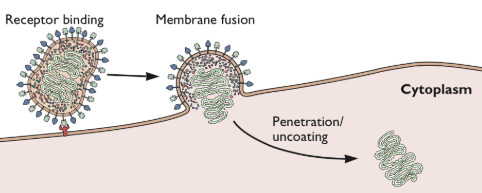
Patreon
#studyblr#notes#my notes#microbiology#microbio#microbiology notes#microbio notes#molecular biology#microorganisms#pathogens#biology#bio#biology notes#bio notes#science#life science#biological science#health science#laboratory science#microscopy#microbial organisms#bacteria#bacteriology#note cards#flashcards#flash cards
10 notes
·
View notes
Text
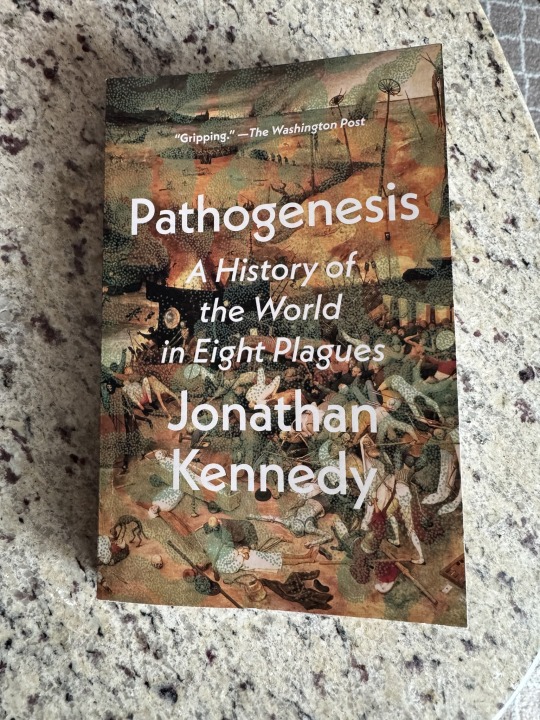
I just finished this great book and I can’t recommend it enough. I don’t want to give anything away because it’s such a fascinating read. But I will say that I was convinced by the author’s arguments regarding the Paleolithic and Neolithic, and I have shared his sentiments regarding Covid being, sadly, an inflection point for a while.
Also, despite how many books I’ve read on the Black Death, I’ve never encountered such a thorough explanation of how intertwined Yersinia has been with our species. If you learn about the Plague, it’s presented as a one-time event. But it was not one time, it’s been constant for millennia until the advent of antibiotics. And if you’re of white European descent, you could be a result of a Yersinia epidemic 5000 years ago. That’s very interesting stuff, but it also makes you wonder in what other ways history is essentially mis-presented.
5/5 An excellent read
8 notes
·
View notes
Text
I've worked with so many pathogens that I can make them appear like magic
bippity boppity 🌬️💫✨bubonic plague✨💫
19 notes
·
View notes
Text

Don’t fall for this nonsense term “immunity debt” - it’s not real.
This term that was made up in 2021 needs to go because it has no meaning except for disinformation.
Just stop it and don't trust news outlets or doctor pundits or economists who pump this sketchy PR out.
instagram
#immunity debt#nonsense terms#pseudoscience#misinformation#medical misinformation#healthcare#public health#pandemic#infection control#infectious diseases#PR#propaganda#disinformation#immune system#pathogens#Instagram
8 notes
·
View notes
Text

The calm before the storm: the autoinhibited resting state of a helper NLR.
Kudos Selvaraj, AmirAli, Pai, Mauricio and the whole Team! https://doi.org/10.1371/journal.pbio.3002868
7 notes
·
View notes
Text
Hide your kids, hide your wives. It's TICK SEASON in Kentucky. Tick season peaks in Spring and Summer, though they're a threat year-round. The most common ticks in Kentucky are the American Dog Tick (Dermacenter variabilis) and Lone Star Tick (Amblyoma americanum). Their bite can transmit Rocky Mountain Spotted Fever, Lyme Disease, and a whole host of other potentially fatal conditions. Early detection and appropriate treatment are necessary in case of infection. If you’re in doubt, have a doctor check it out. They’d rather give you doxycycline for “no reason” than wait until your joints are so swollen and inflamed that you can’t walk. Trust me, I have been there.
In March, the Kentucky legislature approved Senate Resolution 32 advocating for “information on prevention and personal protection and raising public awareness of the causes, effects, potential severity, diagnosis challenges, and treatment options of tickborne diseases and illnesses,” to be accomplished in a coordinated effort with the Kentucky Department of Agriculture, the Department of Fish and Wildlife Resources, and the Department for Public Health. The desire is to raise awareness among average Kentuckians and to better educate our healthcare providers about the risks, warning signs, and courses of treatment. Officials in Louisville, KY, ask their residents who find a tick to share it through the Spot A Tick And Share Program, launched in 2022. The program allows environmental health specialists to identify and monitor the tick populations in the Louisville Metro area, as well as the diseases they transmit. Many local, state, national, and even online programs have been developed to contribute to this valuable data collection. Ask your local health department and nearby universities if they have data collection programs. If they don’t, you can still contribute to an online program like Tick Quest or use an app like TickTracker. You must prevent infection by protecting yourself and checking yourself. If you or your pet do experience a suspicious tick bite, please seek a medical evaluation. Sources: KDFW KY SR32 LouisvilleKY.gov Science Direct SciStarter's Tick Quest Tick Tracker App WDRB
#Kentucky#ticks#dog ticks#lone star ticks#rocky mountain spotted fever#Lyme disease#illness#early detection#treatment#disease#healthcare#medicine#pathogens#tick borne illness#illnesses#spring#summer#Lyme#outdoors#pests#parasites#dogs#Kentucky legislature#senate#SR32#awareness#prevention#department of agriculture#department of fish and wildlife resources#department for public health
4 notes
·
View notes
Text
PATHOGENS MUGSHOT

Credits to Amoeba Sisters on these mischiveous microscopic creatures!
Reference:
(From the "Immune System" video)

#amoeba sisters#pathogens#virus#bacteria#fungi#protist#parasite#science#biology#mugshot#disease#worm#parasitic worm#nucleus
5 notes
·
View notes
Text
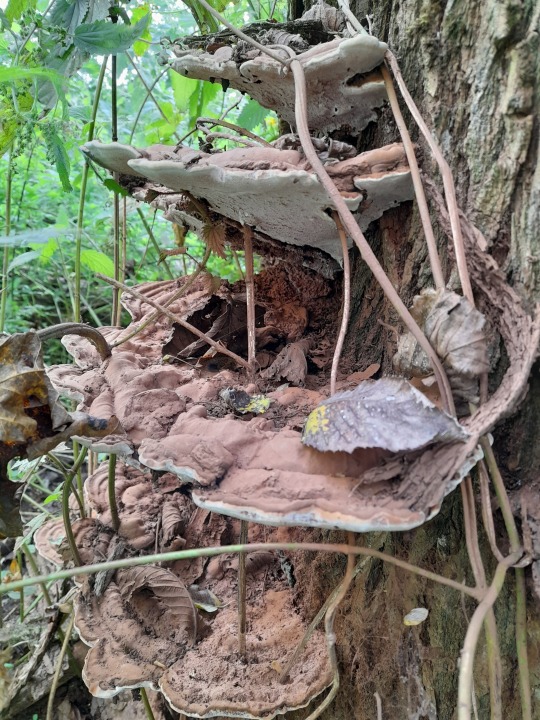

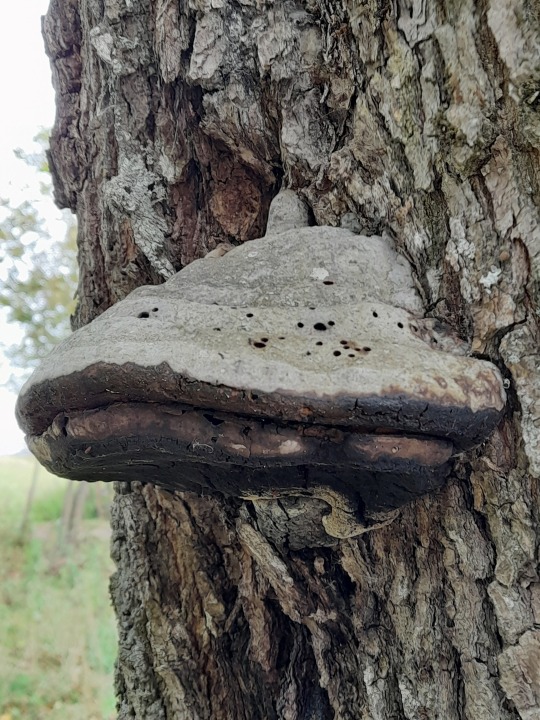
Old photos I have taken years and years back, which I think was like 2020?
FUNGUS!
2 notes
·
View notes
Note
In West Virginian folklore, the Mothman is a humanoid creature reportedly seen in the Point Pleasant area from November 15, 1966, to December 15, 1967. The first newspaper report was published in the Point Pleasant Register, dated November 16, 1966, titled "Couples See Man-Sized Bird ... Creature ... Something". The national press soon picked up the reports and helped spread the story across the United States. The source of the legend is believed to have originated from sightings of out-of-migration sandhill cranes or herons.
The creature was introduced to a wider audience by Gray Barker in 1970, and was later popularized by John Keel in his 1975 book The Mothman Prophecies, claiming that there were paranormal events related to the sightings, and a connection to the collapse of the Silver Bridge. The book was later adapted into a 2002 film, starring Richard Gere.
An annual festival in Point Pleasant is devoted to the Mothman legend.
String identified: t ga , t ta a a cat t t t aat aa , , t c , . T t a t a t t aat gt, at , , tt "C a- … Cat … tg". T ata c t t a a t t ac t t tat. T c t g t a gat gtg t--gat a ca .
T cat a tc t a ac Ga a , a a at a T ta c, cag tat t aaa t at t t gtg, a a cct t t ca t g. T a at aat t a , tag ca G.
A aa ta t aat t t t ta g.
Closest match: Calonectria ilicicola strain GDYJ169 chromosome 1 Common name: Red crown rot
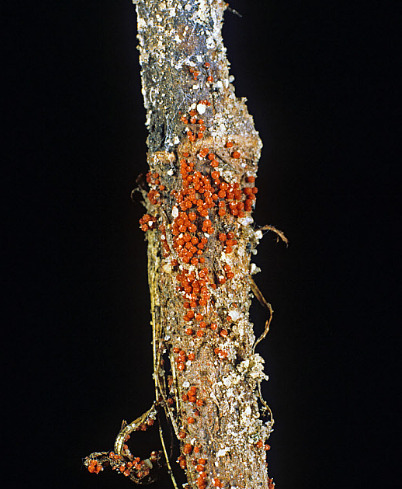
#tumblr genetics#genetics#asks#requests#sent to me#abyssiot#mothman#pathogens#parasites#fungi#red crown rot#rot#FIRST FUNGI
506 notes
·
View notes
Text
Vaccines: The Unsung Heroes of Modern Medicine
Imagine a world where smallpox still reigned supreme, where polio paralyzed thousands annually, and where measles was a rite of passage, sometimes fatal. Yet, here we are, in a world where vaccines have valiantly vanquished these threats.
The paramountcy of vaccines in the annals of medical triumphs cannot be overstated. They are the quintessence of human ingenuity, a testament to our ability to combat nature's most insidious adversaries. Through the meticulous administration of vaccines, we have consigned diseases like smallpox to the historical archives and reduced the scourge of polio to a mere whisper in the annals of modern afflictions.
Statistically, the efficacy of vaccines is irrefutable. The World Health Organization estimates that vaccines prevent 2-3 million deaths annually. Consider the measles vaccine: a marvel of medical science that has reduced global measles deaths by 73% between 2000 and 2018. Similarly, the introduction of the polio vaccine has brought the incidence of polio down by 99%, from 350,000 cases in 1988 to just 33 reported cases in 2018.
Yet, amidst this triumph, there exists a cacophony of dissent. The sanctimonious detractors, draped in the garb of skepticism, pontificate about the perils of vaccination. They brandish anecdotes of adverse reactions as if they were incontrovertible evidence, ignoring the overwhelming preponderance of scientific data. Yes, vaccines, like all medical interventions, are not devoid of risks. However, the incidence of serious adverse reactions is exceedingly rare. The Centers for Disease Control and Prevention notes that severe allergic reactions occur in about 1 in a million doses of vaccines. To put this in perspective, the likelihood of being struck by lightning in any given year is approximately 1 in 500,000—twice as likely as experiencing a severe vaccine reaction.
The irony is palpable. The very individuals who eschew vaccines on the grounds of potential harm are often the beneficiaries of the herd immunity afforded by the vaccinated majority. Their sanctimony is not only misplaced but perilously undermines public health efforts. The resurgence of measles in recent years, driven by declining vaccination rates, is a stark reminder of the consequences of such misguided dogma.
In conclusion, vaccines are the silent sentinels, safeguarding humanity against the ravages of infectious diseases. Their unparalleled efficacy, coupled with an exceptionally low incidence of adverse reactions, renders the anti-vaccine rhetoric not only scientifically unfounded but also morally untenable. The sanctimonious naysayers, in their misguided zeal, imperil the very fabric of our collective health. Let us, therefore, celebrate vaccines for what they truly are: the unsung heroes of modern medicine.
#sanctimonious#science#disease#immunity#vaccine#bacteria#virus#pathogens#climate change#scientific-method#reality#facts#evidence#research#study#knowledge#wisdom#truth#honesty
97 notes
·
View notes
Text
Virus Pathogen Examples

Patreon
#studyblr#notes#biology#biology notes#bio#bio notes#microbiology#microbiology notes#microbio#microbio notes#virology#virology notes#viruses#virus#pathogens#pathology#microorganisms#science#scienceblr#sciblr#laboratory science#lab science#lab sciences#laboratory sciences#mcat#mcat biology#mcat bio
8 notes
·
View notes
Text


It’s April!:D
#biology#igcse#science#study notes#study tips#animals#studyblr#white blood cell#pathogens#antibodies#food poisoning#infectious diseases
7 notes
·
View notes
Text
How Are the World’s Trees Doing? A New Assessment Has Answers. (New York Times)
Excerpt from this story from the New York Times:
More than a third of the world’s tree species are threatened with extinction, according to the first comprehensive assessment of trees by the world’s leading scientific authority on the status of species.
The findings, announced on Monday by the International Union for Conservation of Nature Red List, are especially sobering given the amount of life that trees sustain. Countless species of other plants, animals and fungi rely on forest ecosystems. Trees are also fundamental to regulating water, nutrients and planet-warming carbon.
“Trees are essential to support life on Earth through their vital role in ecosystems, and millions of people depend on them for their lives and livelihoods,” Grethel Aguilar, director general of the International Union for Conservation of Nature, said in a statement.
The tree assessment is considered comprehensive because it includes more than 80 percent of known tree species. In all, 38 percent were found to be at risk of extinction. More than a thousand experts from around the world contributed.
Island biodiversity is particularly vulnerable, in part because those species often have small populations that exist nowhere else, and island trees accounted for the highest proportion of trees threatened with extinction. In Madagascar, for example, numerous species of rosewoods and ebonies are threatened. In Borneo, 99 species in the family of trees called Dipterocarpaceae are imperiled. In Cuba, fewer than 75 mature individuals of the red-flowered Harpalyce macrocarpa, known in Spanish as maiden’s blood, remain.
Around the world, the biggest threats to trees are agriculture and logging, followed by urbanization, said Emily Beech, head of conservation prioritization at Botanic Gardens Conservation International, a nonprofit group that led the research now included in the Red List.
For temperate regions, pests and diseases are a major threat to trees. Climate change is an emerging threat, Ms. Beech said, and it’s unclear how warming will affect the majority of tree species.
The group announced the findings in Cali, Colombia, where government representatives and other participants from countries around the world have gathered for the United Nations biodiversity conference, which is held every two years. Now in their second week, the negotiations are bogged down in tensions over how countries that are poorer economically but often wealthier in biodiversity are going to pay to conserve and restore nature instead of extracting resources.
Deforestation is devastating for the climate and biodiversity, but the world has struggled to stop it. In 2021, more than 140 countries, including Brazil, China, Russia and the United States, vowed to end deforestation by 2030. So many countries signed on that the agreement covers some 90 percent of the world’s forests.
2 notes
·
View notes